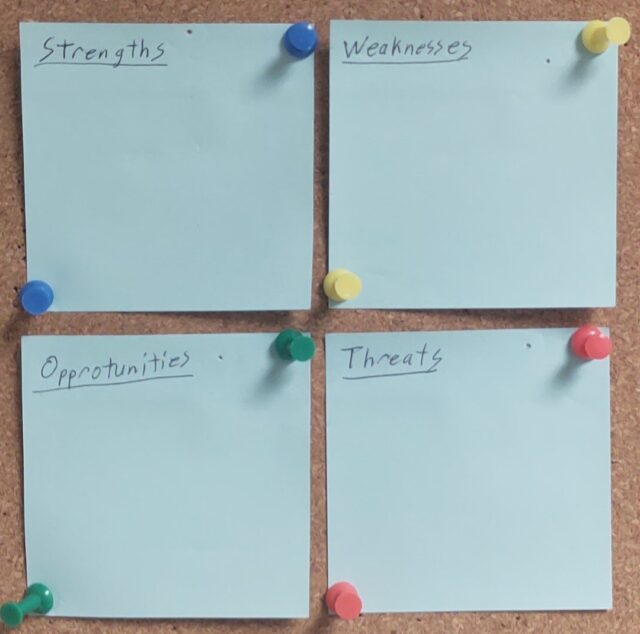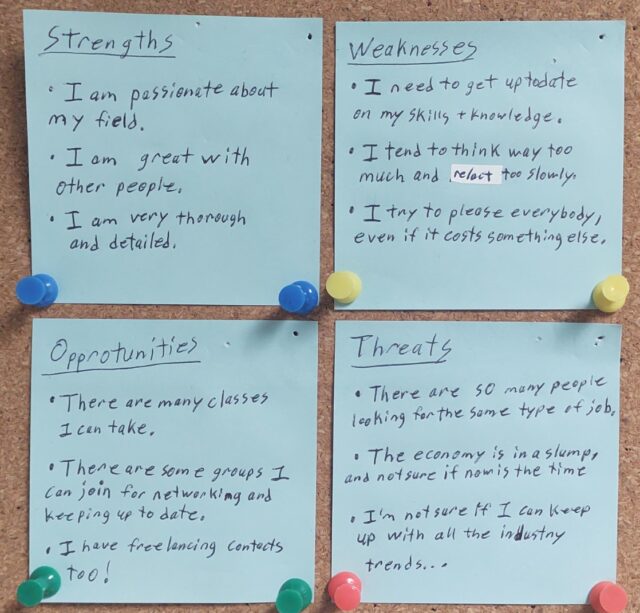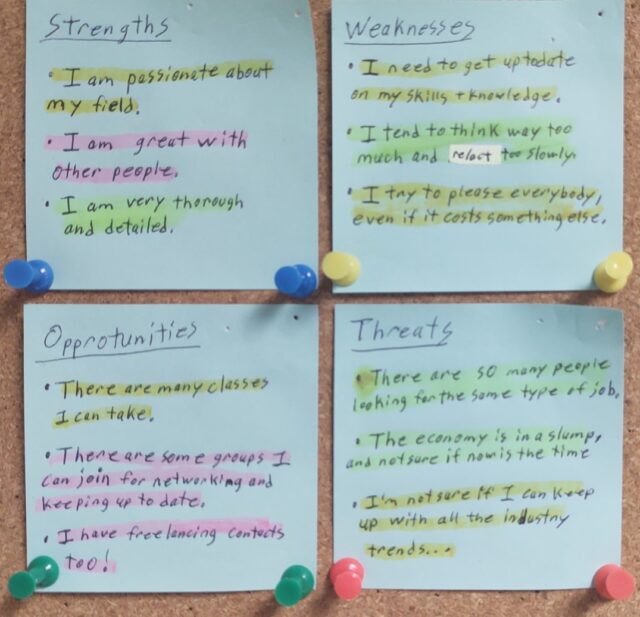S.W.O.T. About Yourself: Gaining Perspective Before Your Next Career Step.
01.05.2024 | Blog

Life is full of many decisions. Every day, for both personal and work-related concerns, there are times when as many factors as possible must be considered and action must be taken. During those times, some perspective on yourself may be the very thing that you need.

What About S.W.O.T.?
A S.W.O.T. analysis is a tool used in many ways for reaching a goal or resolving a problem. Personal uses include achieving one’s own goals, such as weight loss or learning a new skill in a certain amount of time. Examples of business uses for this analysis would be evaluating an employee's/team’s performance or determining how effective a current/prospective business process is.
S.W.O.T analyses are broken down into four categories.
- S is for strengths that the subject of the analysis has. This could be skills, personality traits, or any generally good points of that person, team or process.
- W stands for the weaknesses of the subject. Examples of this would be weak points or things that need improvement.
- O is the opportunities available to the person, team, or process that is being analyzed.
- T is for any threats, things beyond the control of the subject that could hinder or otherwise prevent the achieving of the goal or resolution needed behind the SWOT analysis.
The first step to a S.W.O.T. analysis is to define the goal, problem, or subject being considered. Next, is breaking down objective points about the subject, placing each facet into the above-mentioned categories. Utilizing strengths, bettering weaknesses, seizing opportunities, and understanding threats for a plan, solution, or set of options is the final step.
This article will discuss how a S.W.O.T. analysis can be used to help a person determine their professional moves. For this exercise, let’s imagine a typical professional, who has found a role/industry they are flourishing in and are considering the next step for their career.

Let’s S.W.O.T. It Out!
Jay Doe is currently a supervisor in their department. They want to step into a managerial role but are unsure if they are ready. So, the subject of their S.W.O.T. analysis will be what they need to become a manager.
Next, they create and categorize their own S.W.O.T. points to gain a better perspective on their readiness to advance their career. Upon very careful consideration, here is what they realize about themselves:
- Strengths: Jay is a person who loves the industry they are a part of, approaching every aspect of it with great gusto. They are also very personable, and the people they supervise respect them. Lastly, they are very meticulous and try to approach any problem, task, and idea with the greatest eye for detail.
- Weaknesses: Though they do have some good experience, they lack the higher-level skills/knowledge needed to be proficient in a managerial capacity. The downside of them being meticulous is that they sometimes think too much before acting. As a supervisor, they are also people-pleasing and not always objective about what's better for the situation at hand.
- Opportunities: They have found classes for various hard and soft skills that would be beneficial to their desired profession. Some colleagues of theirs are also part of groups that share common, even niche, interests in their industry. They have also freelanced every now and then as a means for not only extra money but also skill development.
- Threats: Upon looking for work, they see that the current job market is very competitive. Part of the reason for this is because the economy has taken a downturn, so many others are looking for jobs as a result. Aside from all that, their industry is quickly changing in the face of many technological advancements.

S.W.O.T is the Conclusion?
Now having laid out their thoughts on their capabilities for a management position, Jay can piece different aspects together and better decide what they can do. They look at their strengths, weaknesses, opportunities, and threats, drawing the below courses of action:
- They can capitalize on being personable by networking and making connections with groups or contacts from their freelancing.
- They can take classes for developing knowledge and technical or soft skills required for taking a management position.
- Using their meticulous nature, they can do a bit of research on the demands in the job market of their industry to better understand their readiness for making their next career step.
Knowing the steps they can take, Jay can now begin preparing for a move to a management role, be it within their current company or at a new employer.
If you are questioning yourself about your career, or any other facet of personal or professional life, consider performing a S.W.O.T analysis to get a better view of yourself, your situation, and your options. A little perspective can show you a lot about yourself.
******
Are you looking to advance into a higher-level role? Or maybe a new position altogether? Know anyone who is? Please feel free to peruse our current openings and reach out for any inquiries. You can also submit your resume to us directly, and we can contact you if we have anything you would be interested in.
Thank you for reading!
Links:
Bond Homepage: https://bond-consultants.com/
Bond LinkedIn: https://www.linkedin.com/in/bond-consultants/
Jeremy’s LinkedIn: https://www.linkedin.com/in/jeremy-salzer-bond-recruiter/
Cover Image Credit: Image by Adrian from Pixabay